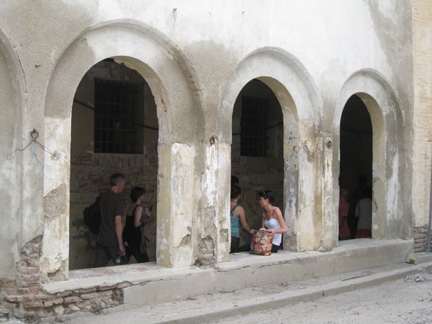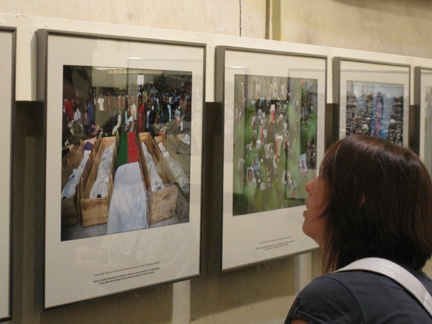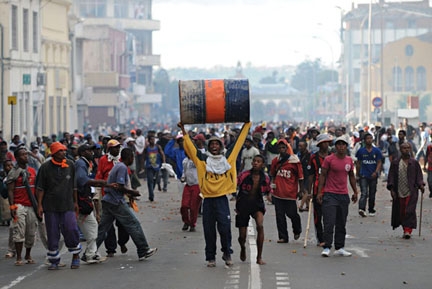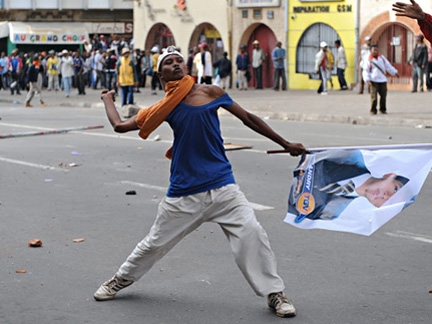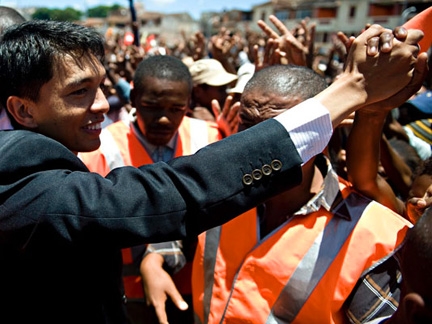Perpignan photojournalism festival
Astrada's massacre in Madagascar
by Aidan O'Donnell
Article published on the 2009-09-02 Latest update 2009-09-07 06:45 TU
I joined Walter Astrada and a crowd, for which the description “enthusiastic” falls short. When some of them brought their own seats, you knew this was not going to be a ten-minute tour.
Astrada was sent to Madagascar earlier this year to cover the takeover of power by the former Mayor of Antananarivo, Andry Rajoelina. At first his trip was sufficiently dull that he was photographing shoes. Just to have something to do.
“Even when I arrived I thought ‘why did they send me here?’”
Although one shoe-picture is included in the exhibition, the majority of the pictures are firmly in line with the title “Bloodbath in Madagascar”. Astrada gets the tour off to a cheery note by reminding us “I am very lucky to be here”.
“It was a massacre basically,” he says. He was covering the demonstration near the presidential palace on 7 February, when 28 people died and over 200 were injured.
“It’s not right that soldiers kill civilians but it’s worse [given that] they were doing nothing,” he tells the group, “they were protesting and saying, okay, ‘president you have to go’ but nothing more than that. They were not even throwing stones”.
He also covered the hospitals, morgues and funerals. “And the line of people just going and paying respects for the dead people was longer, you can see. They were doing lines like this,” he says, indicating queues doubling back on themselves.
“Something I don’t understand is why the president decided to do it, he tells the public, “because the opposition was nearly finished. But after this, all the people were very angry with the president and I think this made it worse”.
“This is the crowd of the opposition and they are just screaming to the police. They are showing this barrel and saying ‘you need to come here and take this’ It’s more a play between the police and the demonstrators”.
Afterwards Astrada told me that some pictures didn’t make it into the exhibition because “they are too graphic and also they are not adding too much information”.
“With the pictures that [festival director] Jean-François [Leroy] selected, and I agreed, we can show exactly what happened and you don’t need to show a lot of these pictures because in the end, maybe you are losing the message if you are showing only blood”.
“And you can see it’s very violent and I think that’s enough,” he says.He says it’s difficult to try and follow the story once the bullets stop flying. “You go to some place, you cover something, but after the news ‘is over’, it’s very difficult to try to be tracking this story”.
Earlier with the public, he dwelled on the question of who wants to see the photos. “Sometimes you are there, covering this, and you come here and nobody’s taking care,” he says, “it’s very sad because you are there, working, trying to show what’s going on and here, sometimes, nobody cares”.
In Perpignan, however, he won’t have that problem. The questions only stopped after about an hour and a half.




